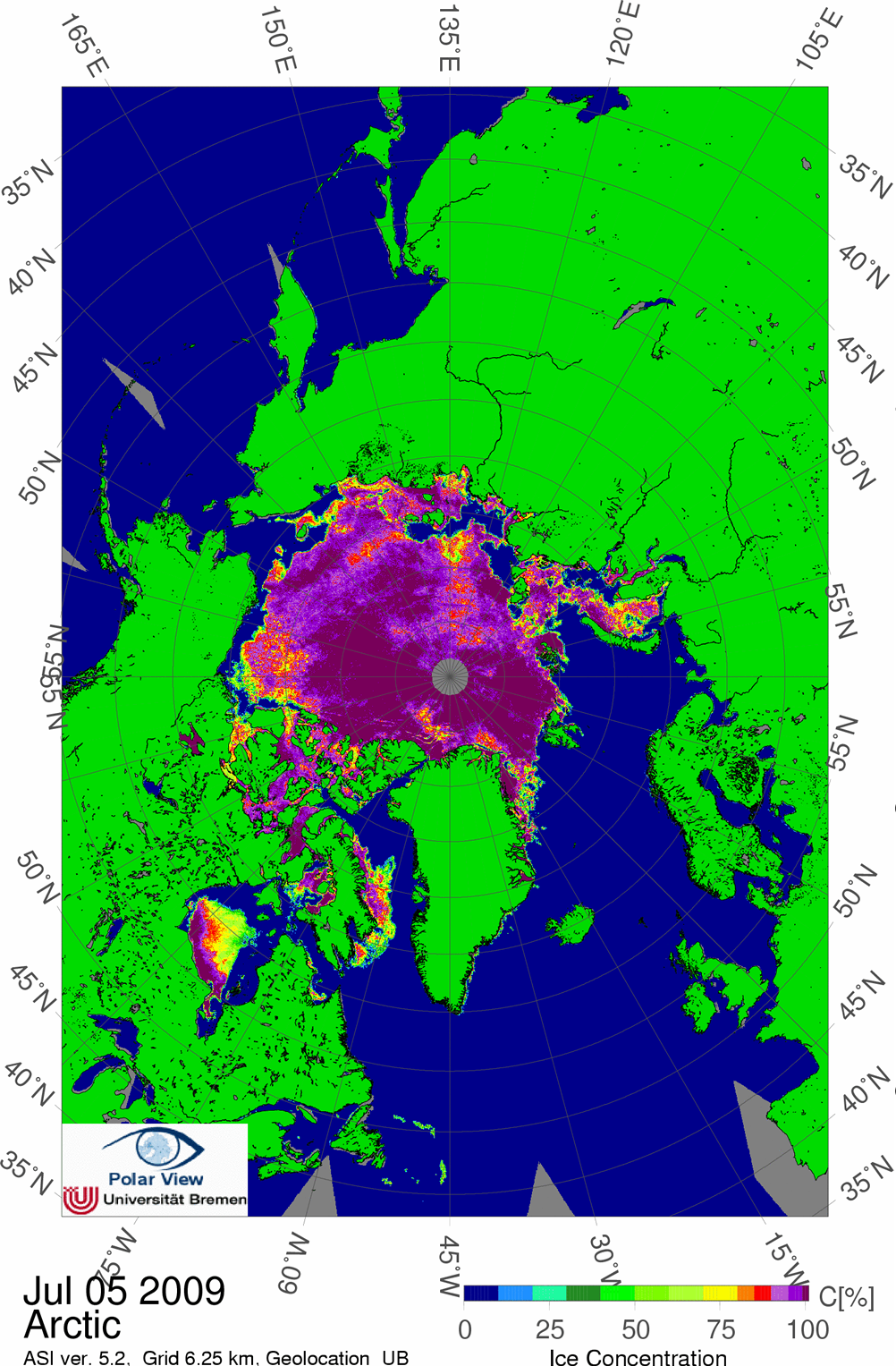Supplement 5.3: Satellite Measurements of Sea Ice (2/4)
Longer wavelengths see through cloud
Sensors operating in the microwave part of the electromagnetic spectrum have one great advantage; they can see through cloud to the surface below.
Wavelengths and frequencies
Wavelengths from tens of millimetres to tens of centimetres are used in microwave remote sensing. Very often we use frequency rather than wavelength, particularly when talking about the sensor. The diagram below shows the microwave spectrum with wavelengths and frequencies.
The microwave spectrum is divided up into a number of bands each designated by a letter. These are also shown.
It's useful to be able to swap between band, frequency and wavelength. So for example
- C band is of the order of 5 cm, 6 GHz
- L band 20 cm, 1.5 GHz
- Ku band 2 cm, 15 GHz
In the microwave part of the spectrum we use passive techniques where the sensor measures radiation emitted by the surface, and active techniques (radar) where the sensor sends out a signal and measures the return from the surface.
Passive microwaves
The thermal emission of objects doesn't just give radiation in the infra red part of the spectrum. Objects also emit microwaves at relatively low energy levels. The intensity depends on temperature (as for the infrared) but is also affected much more by physical properties, such as atomic composition and crystalline structure.
As a result, ice typically emits more microwave energy than the liquid water in the ocean. Thus, sensors that detect passive microwave radiation can easily distinguish sea ice from ocean.
Clouds do not emit much microwave radiation, compared to sea ice. Thus, microwaves can penetrate clouds and be used to detect sea ice during the day and night, regardless of cloud cover.
Passive microwave data generally has poorer spatial resolution than infra-red data, energy levels are much lower so radiation must be collected over a larger region. As a result details of the sea ice, such as leads, are not easily detected.
Sea ice observations from passive microwave sensors began in 1972 with the Electrically Scanning Microwave Radiometer (ESMR) aboard NOAAs Nimbus-5 satellite.
Passive microwave sensors give us information on
- The area covered by ice (ice looks different from the surrounding water)
- The concentration of ice
- the type of ice
Passive microwave sensors give daily or better coverage of the Arctic, day and night and through cloud.

The map of sea ice concentration from AMSR-E from July 5, 2009 shows low ice concentrations in the Laptev Sea, where atmospheric temperatures have been particularly warm in the month of June. NASA AMSR-E data.
From: National Snow and Ice Data Center, USA
Passive microwave sensors
The main sensors used for sea-ice monitoring are:
- Scanning Multichannel Microwave radiometer (SMMR) 1978 - 87
- Special Sensor Microwave/Imager (SMM/I) on a series of satellites from 1987 - present
- Advanced Microwave Scanning Radiometer-EOS (AMSR-E) on the NASA Aqua satellite (2002 - present)
These sensors also measure sea surface temperature and wind speed over the ocean and provide data on atmospheric composition, including water vapour and liquid water.
More about microwaves on the next page where we look at radar techniques.

